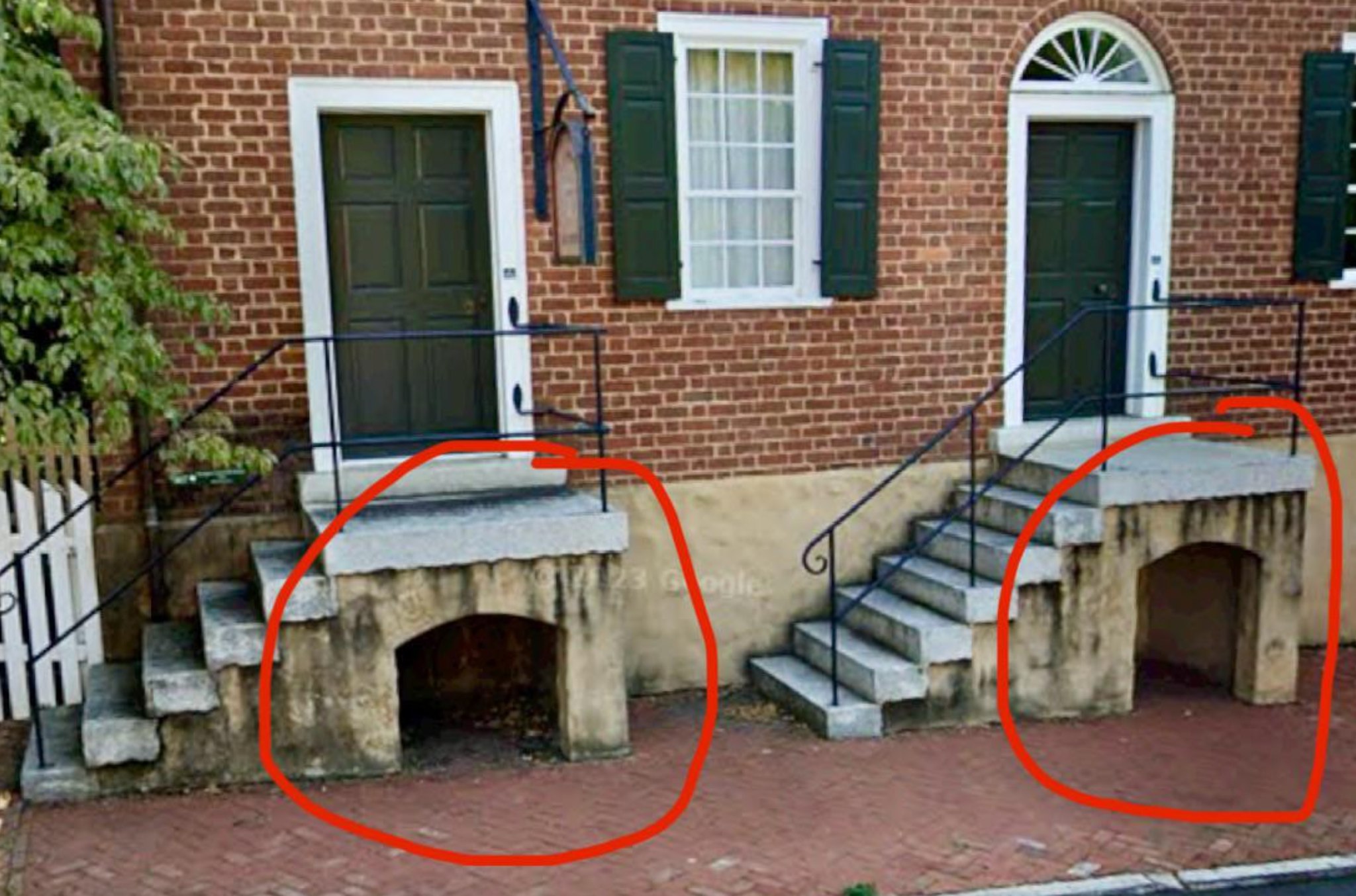If you’ve ever wandered through a historic neighborhood filled with old brick rowhouses in cities like Charleston, Boston, Philadelphia, or New York, you might have noticed something unusual beneath the front steps of one of those homes—maybe a bricked-in archway or a shallow chamber tucked beneath the stoop. At first glance, it might seem like an odd architectural quirk, but those hidden spaces actually had an important function in the past. They’re known as stoop vaults, or sometimes referred to as under-stoop vaults or areaways, and they were once essential features in urban homes built during the 18th and 19th centuries.

These small rooms were cleverly constructed beneath the raised front steps of homes that were elevated to prevent flood damage in cities with poor drainage systems. The hollow area under the stairs, framed by concrete, stone, or brick, was converted into vaults that served practical purposes. One of the most common uses for these vaults was coal storage. Back when coal was the primary source of fuel for heating homes and powering everything from stoves to steam delivery carts during the World War I era, urban homes had to store large amounts of coal on-site. Coal deliveries were typically made through a metal hatch built into the sidewalk, allowing workers to drop coal directly into the vault below. Homeowners would then access their supply from this stoop vault, keeping the dusty, messy fuel source out of the living quarters.
In cities where homes were tightly packed and space was limited, every square foot had to serve a function. City houses in places like Philadelphia and Boston rarely had spacious basements or backyards, so stoop vaults provided essential storage without cluttering the interior. Besides coal, these vaults were often used to stash firewood, tools, and seasonal items—anything that needed to be kept secure yet close at hand. Over time, as heating technology advanced and homes shifted away from coal, many stoop vaults fell out of use. Some were bricked over or filled in, others were simply forgotten. However, in many historic neighborhoods, their presence remains visible to those who know what to look for. A Reddit post once featured an image of two nearly identical brick rowhouses, each displaying a clear, arched vault under the front stoop—perfect examples of how these spaces are hidden in plain sight. In another case, a homeowner from Bremerton, Washington shared the evolution of their 1939 home’s stoop vault.
Initially sealed off during the 1970s and 1980s, it was uncovered in the 1990s and finally repurposed in the 2020s as a firewood storage area, this time with improved drainage. This small space, while modest in size, carried decades of architectural and domestic history. Today, while most stoop vaults no longer serve their original purpose, they are still appreciated as charming relics of a bygone era.
They symbolize a time when every element of a house had a functional reason for being, and when heating your home meant managing a real stack of coal instead of pressing a button. In some restoration projects, homeowners preserve these vaults as unique architectural features. Others choose to modernize them—turning them into storage nooks, utility access points, or even small garden beds. Whether kept in their original form or adapted for modern living, stoop vaults offer a glimpse into how people once designed their homes to meet the demands of daily life. These vaults, although small, tell a big story about urban ingenuity and practicality. They reflect an era when architecture was intimately connected to the rhythms of everyday existence—when heating a home required physical labor, and storage was a creative endeavor in space-limited neighborhoods. So, the next time you’re walking past a weathered set of front steps and spot a little arch or sunken room below, pause for a moment. That unassuming space once played a crucial role in keeping a family warm through the winter. Today, it quietly preserves a chapter of architectural history that speaks volumes about the way we once lived.





